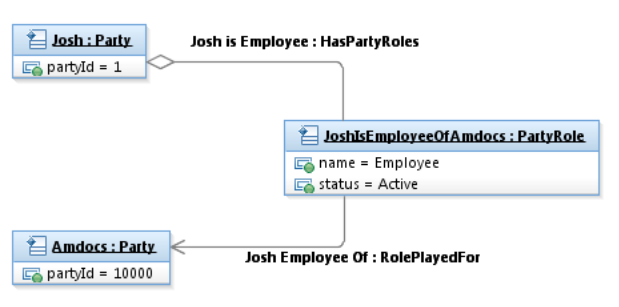| Hide If | |||||||||||||||||||||||
|---|---|---|---|---|---|---|---|---|---|---|---|---|---|---|---|---|---|---|---|---|---|---|---|
| |||||||||||||||||||||||
|
| Show If | ||
|---|---|---|
| ||
Managing PartyRoles relationship in the Customer/Party model
In order to capture some use cases we added a relationship between PartyRole and Party which represents the role is played for (this association is part of existing Amdocs contribution on FrameworkAgreement) . This way a CSP (Orange) can model employer/employee relationship between Individual (Josh) and Organization (Amdocs). |
© TM Forum 2015. All Rights Reserved


